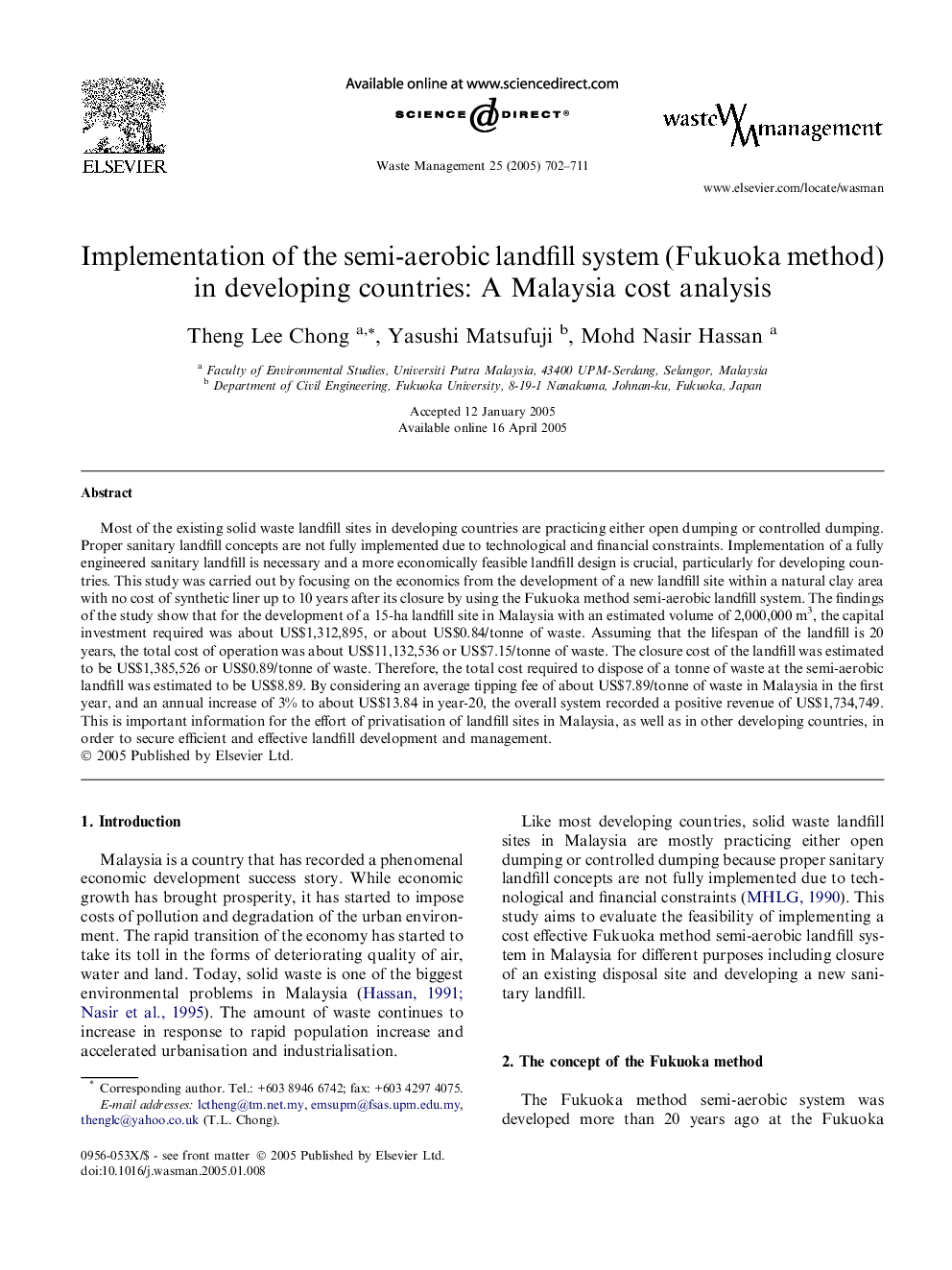| Article ID | Journal | Published Year | Pages | File Type |
|---|---|---|---|---|
| 9465210 | Waste Management | 2005 | 10 Pages |
Abstract
Most of the existing solid waste landfill sites in developing countries are practicing either open dumping or controlled dumping. Proper sanitary landfill concepts are not fully implemented due to technological and financial constraints. Implementation of a fully engineered sanitary landfill is necessary and a more economically feasible landfill design is crucial, particularly for developing countries. This study was carried out by focusing on the economics from the development of a new landfill site within a natural clay area with no cost of synthetic liner up to 10 years after its closure by using the Fukuoka method semi-aerobic landfill system. The findings of the study show that for the development of a 15-ha landfill site in Malaysia with an estimated volume of 2,000,000Â m3, the capital investment required was about US$1,312,895, or about US$0.84/tonne of waste. Assuming that the lifespan of the landfill is 20 years, the total cost of operation was about US$11,132,536 or US$7.15/tonne of waste. The closure cost of the landfill was estimated to be US$1,385,526 or US$0.89/tonne of waste. Therefore, the total cost required to dispose of a tonne of waste at the semi-aerobic landfill was estimated to be US$8.89. By considering an average tipping fee of about US$7.89/tonne of waste in Malaysia in the first year, and an annual increase of 3% to about US$13.84 in year-20, the overall system recorded a positive revenue of US$1,734,749. This is important information for the effort of privatisation of landfill sites in Malaysia, as well as in other developing countries, in order to secure efficient and effective landfill development and management.
Related Topics
Physical Sciences and Engineering
Earth and Planetary Sciences
Geotechnical Engineering and Engineering Geology
Authors
Theng Lee Chong, Yasushi Matsufuji, Mohd Nasir Hassan,
